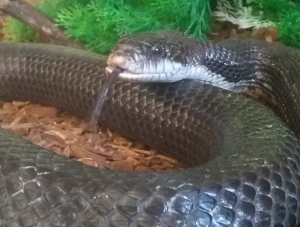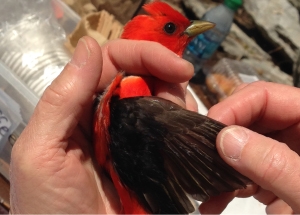
"Are they poisonous?"
We are lucky to have a resident snake as an animal ambassador at all three branches of the Urban Ecology Center: Neile the black rat snake at Riverside Park, Andre the bull snake at Washington Park, and Sara the bull snake at Menomonee Valley. These snakes have the job of giving our visitors and students an up close look at a greatly misunderstood animal.
One of the most common questions people ask when they are meeting our snakes is: “are they poisonous?” The answer is no, they are not. But also, that question is not necessarily asking what you think it is asking. Because very few snakes in the world are actually, by definition, poisonous.
Trip to the Vet with the Washington Park Branch Animals
If you’ve been to one of our Urban Ecology Center branches, you have probably visited one of our Native Wisconsin Animal Rooms and seen the many cold-blooded critters that call the UEC our home. Our education animals are an important part of our mission to provide kids and families with life-changing encounters with the natural world. A lot goes on behind the scenes to make this happen: the animals need to be fed, their homes need to be cleaned, and we need to make sure they remain healthy. That last item is made much easier thanks to the generosity of Lakeside Animal Hospital.
See For Yourself - Research and Citizen Science
Our research program has two unique features: an urban habitat focus and the inclusion of volunteer community scientists.
The urban wilderness research and monitoring we do provides baseline data that allow us to track how our habitat improvements affect wildlife over time. We’re measuring the changes so others can replicate the results in other cities.
We are one of the leaders of an international movement to facilitate community-led research and monitoring. Our Community Science program focuses as much on the process of engaging community volunteers as it does on the research process itself. What this means is that everyone can contribute in a meaningful way to scientific research.
Copyright © 2023 The Urban Ecology Center





